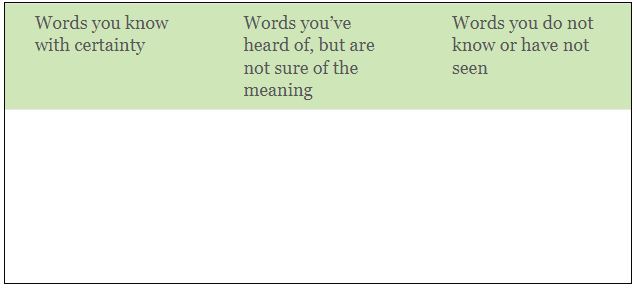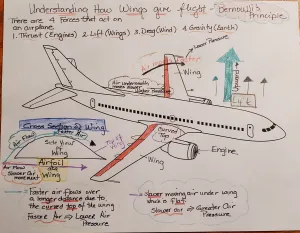STEM and ELD: 2 Great Strategies for Building Vocabulary in STEM
Vocabulary remains a major factor in English learners (ELs) learning grade-level content. Here, I share two strategies that will pave the way for your ELs to use their previous knowledge to acquire their second language content.
Learning logs are a way to capture your lesson’s content and the language needed to understand it. It can also be used as a way to record information for future reference. Interactive pictorial graphic organizers are a visual scaffold to help your students understand content.
1. Learning Logs
Learning logs are introduced at the beginning of the unit so students can fully explore a new topic while keeping track of the related vocabulary that they are responsible for learning and understanding. Here is how it works:
Let’s say that you are starting a lesson on weather, and you want to first introduce the students to the types of clouds that exist. Instead of giving the students the names of the clouds and making them memorize them, you do the following:
- Display on the screen the types of clouds that you want the students to learn and ask the students to describe them using one or two words in their own words.
- As they are describing, you write their descriptions on the board or on chart paper in the front of the room.
- You then provide for them the proper words for the clouds, have them chorally recite the vocabulary (e.g., hurricane clouds, fog, overcast, front, funnel) and see if the students can connect any of the science words with their description of the clouds. To do this, provide them with a worksheet like this one:

- Have the students complete the chart first alone, then with their table group. They first work independently, then in a group discussing their choices and listening to each person talk about the words. This allows the students to share their knowledge of the words they know with certainty with their peers, which provides the students with the opportunity to listen, speak, and write in English.
- Gather the students back together as a whole group. Have them share which words they knew, match them to their initial description of the word, and decide which cloud picture they think it matches.
- Using prepared science cloud words written on index cards, have a student match the science word to the cloud picture. For example, if one of the cloud pictures was a top view of a hurricane with the “eye” or “hole” visible, and one of the students earlier described it as a cloud with a hole in it, they would match these together. To prompt the match, ask them, “which science word do you think it could be and why?” Do this for each word the students listed in the first column.
- Tell students that as they progress through the unit, the goal is for the words in the last column on the right side to move all the way to the first column on the left side.
- Have the students continually refer to their learning log and update the cloud picture to the science cloud word as you teach the unit, moving the words gradually to the first column.
The benefit of this scaffold is that the students are making sense of the material using their own previous knowledge. They can now bridge the science word with their own words, which takes up less brain power in working memory. Remember, the brain likes to make meaning first, details later.
2. Interactive Pictorial Graphic Organizers
This strategy, I learned about from the GLAD project, which stands for Guided Language Acquisition Instruction. It consists of a series of instructional strategies, but I am going to focus on the interactive pictorial graphic organizer. It is very important to note that GLAD is a tool in your toolbox of strategies. It is not intended to replace any English language development programs for ELs. This graphic organizer is pretty much like telling a story with graphics. This is how it works:
- Have a light sketch or picture prepared ahead of time of what you are going to be teaching either projected on the screen or on large paper taped to your board.
- As you are discussing the topic, begin to draw on your sketch, introducing vocabulary words, like this:

Here is an example of a lesson on explaining how wings give flight, based on Bernoulli’s Principle.
- Only use the vocabulary words that will be needed for that lesson, and return to it as you progress through the lesson, filling in the new vocabulary words as you move along.
- You can also ask the students what they call the parts in your drawing, connecting them to the science word as referenced in the learning log.
- The students can also refer to this graphic organizer for reference during the lesson.
Vocabulary remains a big issue for ELs as they learn English, and vocabulary in science is needed for comprehension of content. Providing ELs with as many scaffolds as possible, especially with visuals and with interaction, to learn vocabulary is instrumental to their language development and academic success.
How do you teach vocabulary in your classroom?

